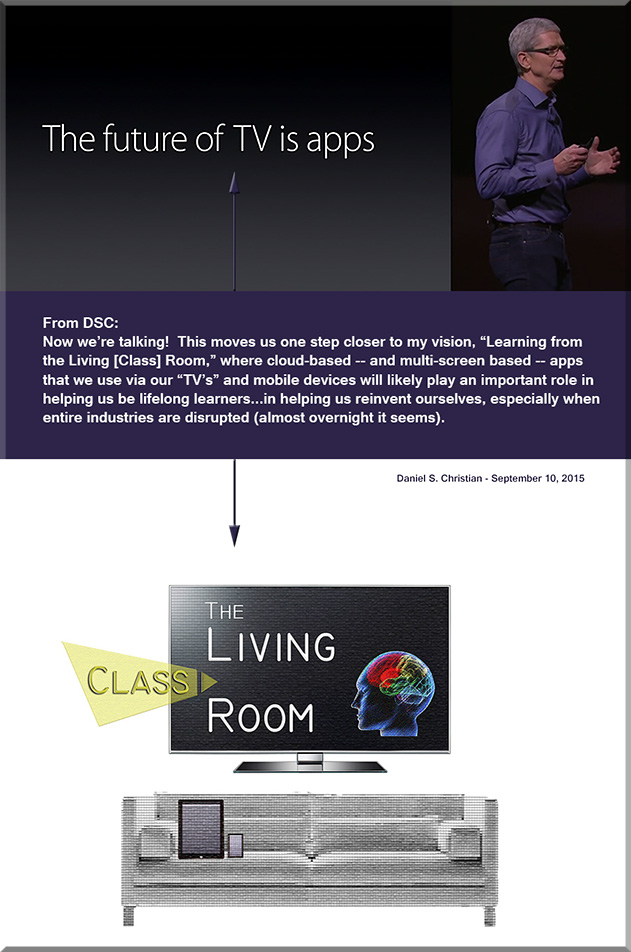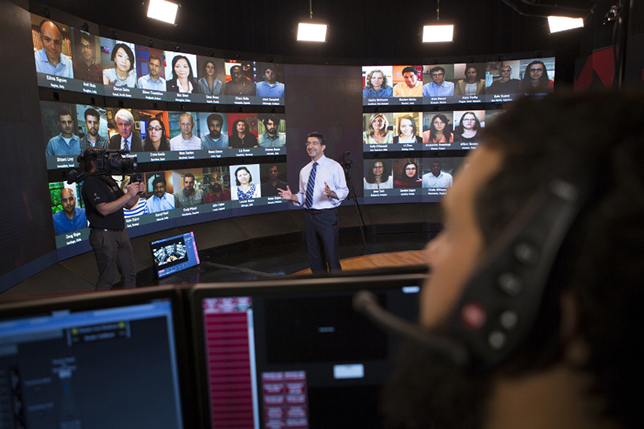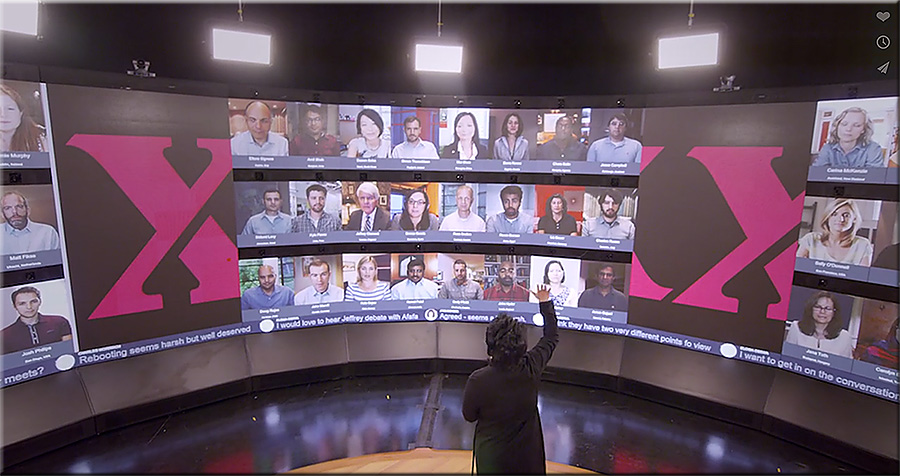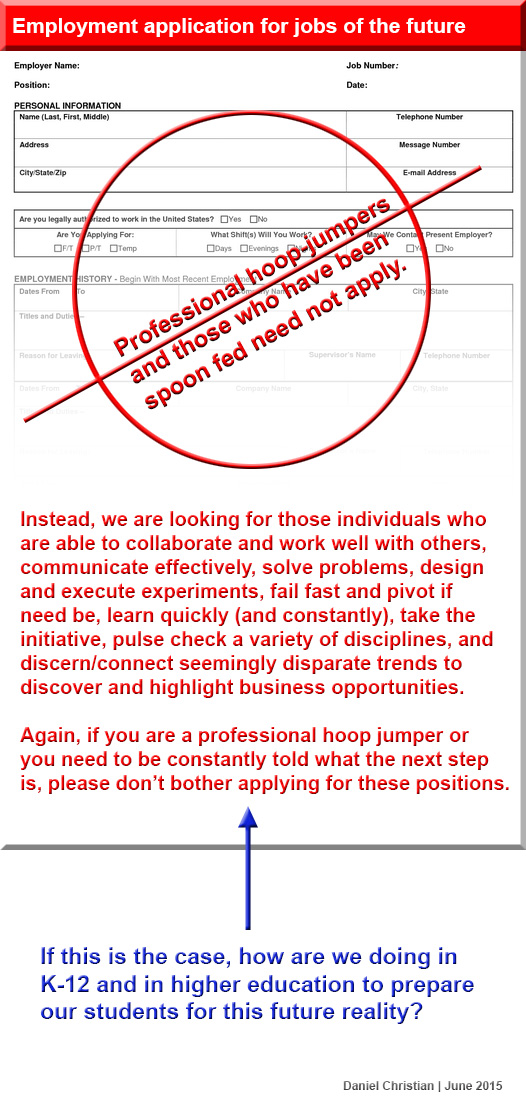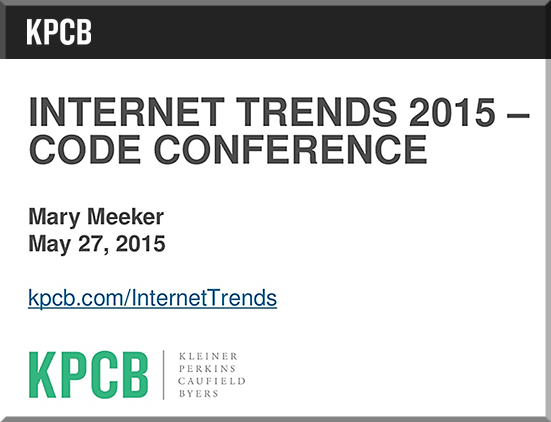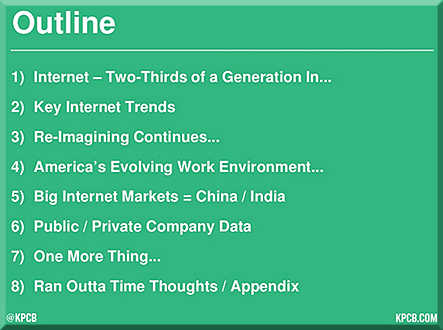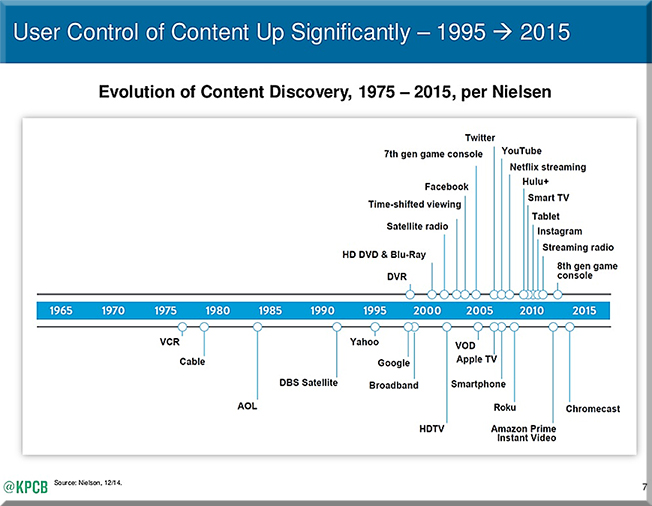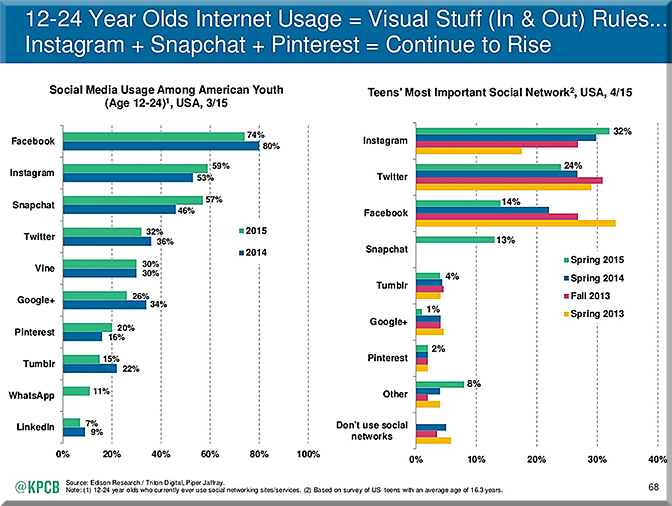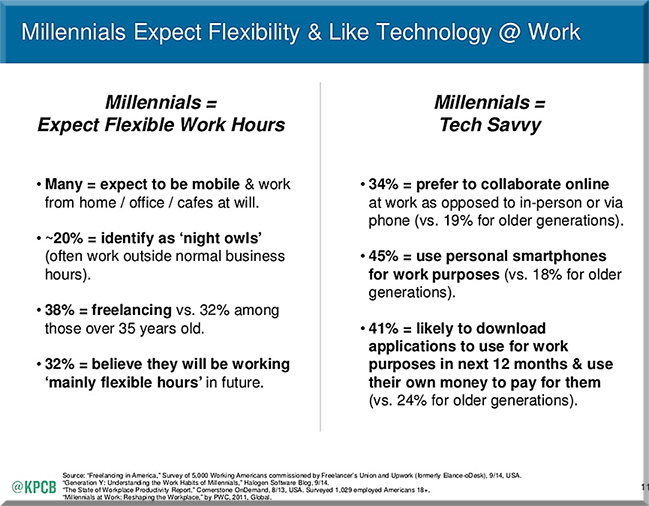From DSC:
We’ll also be seeing the integration of the areas listed below with this type of “TV”-based OS/platform:
- Artificial Intelligence (AI)
- Data mining and analytics
- Learning recommendation engines
- Digital learning playlists
- New forms of Human Computer Interfaces (HCI)
- Intelligent tutoring
- Social learning / networks
- Videoconferencing with numerous other learners from across the globe
- Virtual tutoring, virtual field trips, and virtual schools
- Online learning to the Nth degree
- Web-based learner profiles
- Multimedia (including animations, simulations, and more)
- Advanced forms of digital storytelling
- and, most assuredly, more choice & more control.
Competency-based education and much lower cost alternatives could also be possible with this type of learning environment. The key will be to watch — or better yet, to design and create — what becomes of what we’re currently calling the television, and what new affordances/services the “TV” begins to offer us.
From Apple’s website:
Apple Brings Innovation Back to Television with The All-New Apple TV
The App Store, Siri Remote & tvOS are Coming to Your Living Room
Excerpt:
SAN FRANCISCO — September 9, 2015 — Apple® today announced the all-new Apple TV®, bringing a revolutionary experience to the living room based on apps built for the television. Apps on Apple TV let you choose what to watch and when you watch it. The new Apple TV’s remote features Siri®, so you can search with your voice for TV shows and movies across multiple content providers simultaneously.
The all-new Apple TV is built from the ground up with a new generation of high-performance hardware and introduces an intuitive and fun user interface using the Siri Remote™. Apple TV runs the all-new tvOS™ operating system, based on Apple’s iOS, enabling millions of iOS developers to create innovative new apps and games specifically for Apple TV and deliver them directly to users through the new Apple TV App Store™.
…
tvOS is the new operating system for Apple TV, and the tvOS SDK provides tools and APIs for developers to create amazing experiences for the living room the same way they created a global app phenomenon for iPhone® and iPad®. The new, more powerful Apple TV features the Apple-designed A8 chip for even better performance so developers can build engaging games and custom content apps for the TV. tvOS supports key iOS technologies including Metal™, for detailed graphics, complex visual effects and Game Center, to play and share games with friends.
Addendum on 9/11/15:
- New Apple TV release date, specs, price and news — from techradar.com by Nick Pino









